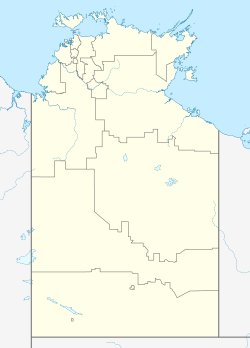Livingstone Airfield | |||||||||||
|---|---|---|---|---|---|---|---|---|---|---|---|
| Summary | |||||||||||
| Location | Livingstone, Northern Territory, Australia | ||||||||||
| Built | 13 April 1942 | ||||||||||
| In use | 1942–1945 | ||||||||||
| Coordinates | 12°41′19.5″S131°5′21.36″E / 12.688750°S 131.0892667°E | ||||||||||
| Map | |||||||||||
 | |||||||||||
| Runways | |||||||||||
| |||||||||||
Livingstone Airfield (34 mile) was an airfield at what is now Livingstone, Northern Territory, Australia during World War II.
Contents
- Units based at Livingstone Airfield
- Japanese bombing raids on Livingstone Airfield
- See also
- References
- External links
The airfield was built by the 808th Engineer Aviation Battalion, less Company A and HQ Detachment, between 16 March 1942 until 13 April 1942. The runway was 5,000 ft × 100 ft (1,524 m × 30 m). The airfield was named after Lieutenant Livingstone of 9th Fighter Squadron of the 49th Fighter Group who was killed as result of friendly fire when he was hit by Australian anti-aircraft guns during a Japanese air raid near Cox Peninsula to the west of Darwin, Northern Territory on 4 April 1942.
